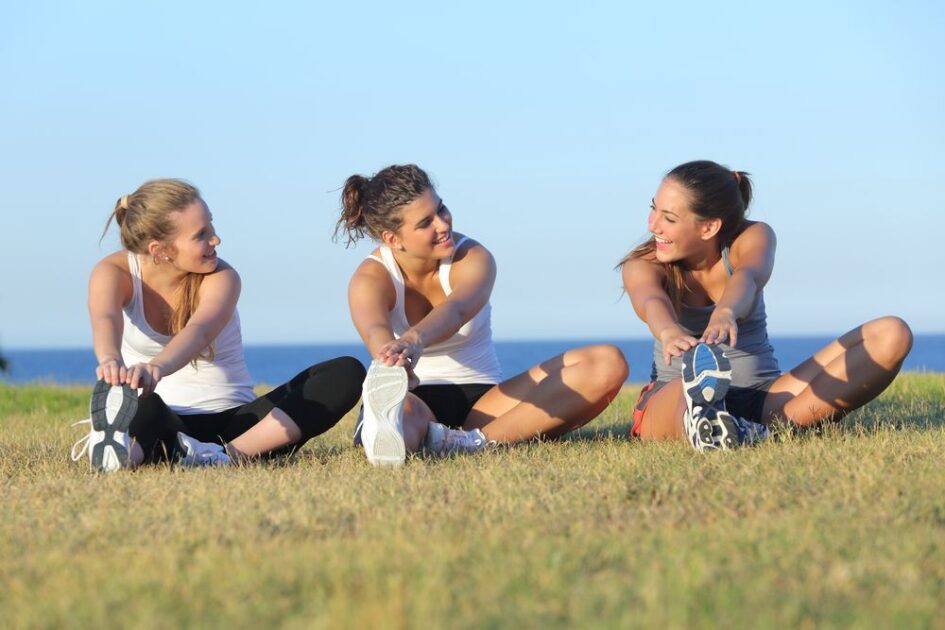How can I set realistic fitness goals?
Make your first goals achievable, realistic and measurable

If you want to exercise but find it difficult to stick to a routine here are our tips to help you reach your fitness goals.
How to stick to an exercise routine
Figure out why you want to exercise
Think about what you are trying to achieve with your exercise regime – are you looking to compete in a marathon, to build muscle, to lose weight or just to generally improve all ’round fitness? Your exercise regime will vary depending on what your goals are.
Set SMART goals
Specific, Measurable, Attainable, Realistic and Timely. As we mentioned in this article, this means that you should be clear about your goals (specific), have a way to measure your goal (measurable), set a goal that you can actually achieve (attainable), set a goal that is realistic (realistic), and have a set time frame for when you will meet your goal (timely).
Think about how much time you realistically have to devote to exercise. At the start, you may be willing to devote two hours a day to your programme, but over the long-term that amount of exercise is probably not sustainable. It could also lead to overtraining or even exercise addiction. So be careful.
Be patient
Remember that it takes time and dedication to reach your goals. You may ultimately have a goal of running a 10K or bench pressing 200 lbs, but you will have to work up to it. You certainly won’t start out anywhere near those goals!
Make a schedule
Set a reasonable schedule and stick to it. It’s best to take some days off each week, even if you are really gung-ho, you definitely need to take one day off. Most professional or even competitive amateur athletes take at least one day a week off. It is very important to rest both for psychological reasons (i.e. a well deserved break) and for physical reasons (overtraining has a whole host of negative effects on the body, including increased risk of joint or muscle injury and negative effects on our hormone system).
Try making it social
Many people find it much easier to exercise regularly if they have a partner to work out with. So if a friend or family member is keen to get going, you could do it together. Taking your dog for a walk or a jog is also a great way to exercise as you can use your pet for motivation.
Be flexible
Adjust your goals if necessary. If you had originally planned to run five nights a week, but constantly find yourself missing days, think about reducing your schedule to three nights instead. It’s better to set smaller achieveable goals than it is to set big goals that you fail to reach.
Have balance
If you are combining diet with exercise in an effort to lose weight, many experts also suggest picking one day to enjoy some treats, along with a rest. This can keep your metabolism firing on all cylinders. The more targeted form of a treat day is called a ‘refeed’ and it is more specific than a treat day. Neither a treat day nor a refeed day is meant to be an all out binge.
Building a programme week by week
Weeks One and Two
At the beginning, aim to add a few minutes to your current level of activity. For example, add 10-15 minutes of physical activity to your daily routine over the next two weeks (you could take a walk during school or work lunch hour, take the dog for a walk or go for a walk with a friend).
Weeks Three and Four
Build on weeks one and two, so that in weeks three and four you gradually add more minutes of activity to your day. You could be participating in up to 25-40 minutes of active time over the course of most days (make your current activities longer). You are in control (only you can decide how long you want to be active for) and the more time you are active, the greater the health benefits.
Weeks Five and Six
Aim to be active for at least 60 minutes most days of the week. Remember you can add your minutes up, so that you could be active six times each day for 10 minutes each time (walking, swimming, stair climbing). You can choose how long you want to be active for at any one time. This gives you freedom to vary your pattern, so that activity becomes a convenient and enjoyable part of your daily routine.






